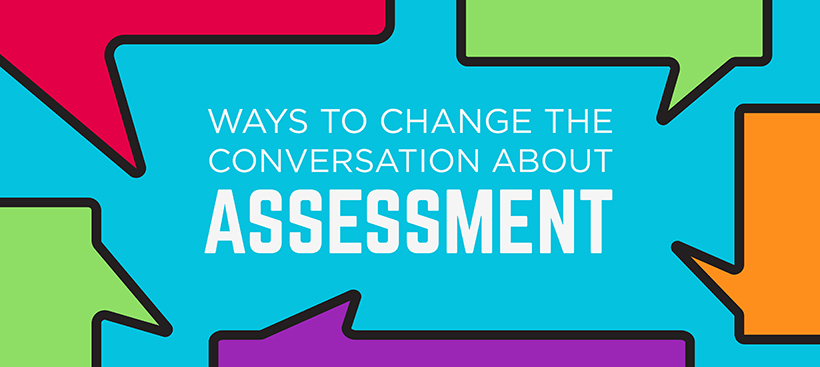From the NCTE Standing Committee on Literacy Assessment
This post was written by NCTE member Idalia Nuñez, a member of the NCTE Standing Committee on Literacy Assessment.
Biliteracy is the critical knowledge that derives from reading and writing multiple sociocultural and linguistic worlds (de la Piedra, 2006). For bilingual children and families, biliteracy is often not an option; it is necessary. It means sustaining who they are as individuals and families as well as their connections to their culture(s). Biliteracy is part of their everyday local and transnational experiences.
In a previous Language Arts article (Nuñez, 2019), I highlighted what Latinx transnational families taught me about how they observe, assess, and support biliteracy learning in their homes. Their strategic, pragmatic, and creative ways have been the driving force to their children’s bilingual, bicultural and biliteracy knowledge.
Transnational parents, even when they only speak one language, have more nuanced bilingual sensitivities that have helped them enact a bilingual and biliterate vision for their children. They are constantly engaging in kidwatching (Owocki & Goodman, 2002) and critically listening and assessing for their children’s bilingualism and biliteracy.
How can teachers learn of the knowledge, assessment, and observations that transnational parents have about their children’s biliteracy?
- Get to know transnational families, and parents/guardians in particular. Ask them about who they are, why bilingualism and biliteracy are important to them, and how they see this reflected in their everyday life. For example, in a previous NCTE blog entry, Bobbie Kabuto shared about Biographic Biliteracy Profiles that can be used to learn about bilingual students; these profiles can be co-created with parents of bilingual students to collect more details about their biliteracy knowledge.
- Ask parents/guardians to share their multimodal observations. With access to digital tools, families can daily document their children’s experiences, such as celebrations and accomplishments, among other important occurrences. For example, teachers can ask parents for videos, pictures, testimonios, and stories of how they have observed and, at times, even documented what their children can do with their bilingualism and biliteracy.
- Collectively build and sustain open and ongoing lines of communication. Ask and learn about the ways and platforms that families use to communicate with others within their families. Create accessible pathways for them to continue to share with you what their children can do. For example, this can mean creating a class Facebook page where all families can share what they observe their children doing, or creating WhatsApp groups or any other available lines of communication.
- Treat and view parents as expert partners in biliteracy learning. Parents have been teaching, observing, and assessing their children’s complex language abilities and knowledge since they were born. They have an asset-based and critical perspective, high expectations, and a biliteracy vision for their children that can inform curriculum and instruction. For example, teachers can draw on the tools, methods, and approaches that parents have developed for language teaching and assessing to incorporate as part of their own pedagogical toolkit.
(Re)framing transnational parents as biliteracy pedagogues can help educators also see parents as assessment partners to better understand the types of knowledge and involvement that parents offer their children on a daily basis. Alongside this, deeply understanding and recognizing biliteracy beyond the curricularized version that is utilized in schools can create more linguistically and culturally relevant and sustaining literacy assessment practices for bilingual and multilingual students.
References
De La Piedra, M. T. (2006). Literacies and Quechua oral language: Connecting sociocultural worlds and linguistic resources for biliteracy development. Journal of Early Childhood Literacy, 6(3), 383–406.
Nuñez, I. (2019). ” Le Hacemos La Lucha”: Learning from Madres Mexicanas’ Multimodal Approaches to Raising Bilingual, Biliterate Children. Language Arts, 97(1), 7–16.
Owocki, G., & Goodman, Y. (2002). Kidwatching: Documenting children’s literacy development. Heinemann.
 Idalia Nuñez is an assistant professor of Language and Literacy at the University of Illinois–Urbana-Champaign. Her research focuses on addressing linguistic equity in teaching and learning to support the education of bilingual students of color. Her research has been published in Research in the Teaching of English, Language Arts, Bilingual Research Journal, Journal of Teacher Education, and Literacy Research: Theory, Method, and Practice.
Idalia Nuñez is an assistant professor of Language and Literacy at the University of Illinois–Urbana-Champaign. Her research focuses on addressing linguistic equity in teaching and learning to support the education of bilingual students of color. Her research has been published in Research in the Teaching of English, Language Arts, Bilingual Research Journal, Journal of Teacher Education, and Literacy Research: Theory, Method, and Practice.
It is the policy of NCTE in all publications, including the Literacy & NCTE blog, to provide a forum for the open discussion of ideas concerning the content and the teaching of English and the language arts. Publicity accorded to any particular point of view does not imply endorsement by the Executive Committee, the Board of Directors, the staff, or the membership at large, except in announcements of policy, where such endorsement is clearly specified.

